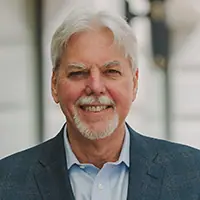
Adapting Bank Supervision to the Covid-19 Reality
Can a bank socially distance itself from its primary federal regulator?
In the midst of the Covid-19 pandemic, the answer is apparently yes.
The Office of the Comptroller of the Currency, which oversees nationally chartered banks and thrifts, has been impacted by the virus’ shutdown in much the same way as the institutions it oversees.
In an interview with Bank Director, Acting Comptroller of the Currency Brian Brooks – who replaced former Comptroller Joseph Otting after his resignation on May 29 – says the pandemic has forced the agency to adapt its preferred method of operation to the restrictions of social distancing.
“One thing that I worry about from a supervision perspective is, historically, bank examiners go on-site,” Brooks says. “Not because it’s convenient, but because being able to be in a room with bankers and sit face to face with people … is a critical tool in identifying fraud and identifying trends that might not make it onto a management report, or might not be raised in a formal presentation. And the longer banks are in a work-from-home environment, the harder it is for us to do that human aspect of bank supervision.”
Brooks says while there are legitimate health reasons why much of the banking industry has operated with a distributed workforce for the last several months, he’s anxious to reintroduce the element of personal contact into bank supervision. “I know that may not happen next month or even this quarter, but we need to start charting that course back, because this method of supervision can’t go on forever,” he says.
The OCC is reopening its facilities on June 21 and is encouraging people who do not have underlying health conditions and would feel comfortable doing so to return to their offices. “That’s our way of showing leadership to the industry of how one can start charting this course back to normalcy,” Brooks explains. “But having said that, we’ve moved to significantly enhanced cleaning schedules. We’re obviously providing face masks and gloves to people who are in mail-handling or public facing positions. We’re changing seating arrangements to maximize the availability of social distancing. And of course, we’re continuing to allow anyone who wants to, to work remotely while making the office … more normalized for everybody else.”
Brooks believes that recent data on the virus suggests that the health risk for most people is manageable. “What the data seem to be showing is that hospitalization rates and fatality rates for people of working age, who don’t have particular risk conditions, seem to be within historic norms,” he says. “Which is not to say that this is not a dangerous disease, but it does appear to be that … people who are under a certain age and who don’t have certain conditions are not at special risk relative to other types of viruses that we’ve seen before.”
And when OCC examiners do return to on-site visits to their banks, they will follow whatever safety protocols the bank has in place.
The Covid-19 pandemic has dealt a crushing blow to the U.S. economy – which entered a recession in February – and the OCC wants national banks to take a hard look at their asset quality. It’s not an easy assessment to make. Banks have granted repayment deferrals of 90 days or greater to many of their borrowers at the same time as the federal government suspended troubled debt restructuring guidance and pumped money into the economy through the Paycheck Protection Program. A clear asset risk profile has yet to emerge for many institutions.
“Some of the traditional metrics that we’ve used to determine asset quality … could be masked by a lot of the relief efforts,” says Maryann Kennedy, senior deputy comptroller for large-bank supervision at the OCC. “Many of our institutions are going back and retooling many of their stress testing models in response to the breadth, depth and velocity of the number of programs that they’re instituting there.”
Just because OCC examiners don’t have personal contact with their banks doesn’t mean they haven’t been talking to them through the pandemic. Some of those conversations are an effort to triage which banks may need the greatest attention from regulators.
“There is a real time risk-based assessment of what’s happening with our national banks and federal savings associations, so we can try to understand how we move forward and where we focus our attention. [It’s] is very challenging, similar to the challenge [banks have] trying to understand their asset quality and the situation with their loan portfolios,” says Kennedy.
The OCC is essentially trying to assess the pandemic’s economic impact on national banks and thrifts while those institutions make their own credit risk assessments.
“A real-time conversation that’s going on right now, particularly in that in our larger banks, is ‘What is your stress forecasting looking like for provision expense in the second quarter, as well as what could be those potential impacts to earnings, particularly as it relates to any earnings expectations that might be out there?’” Kennedy says. “Those are challenging conversations going on right now … as our bank managements sort of work through the struggle [with] some of those specifics. It’s not a real predictive economy right now.”



